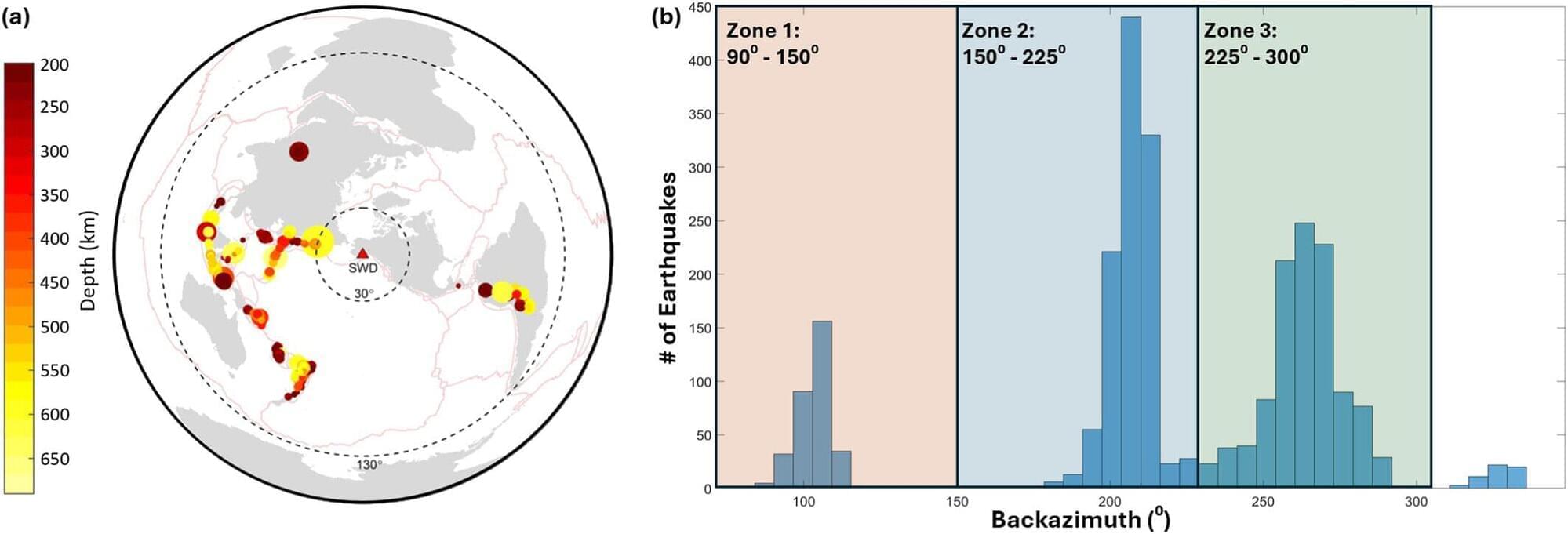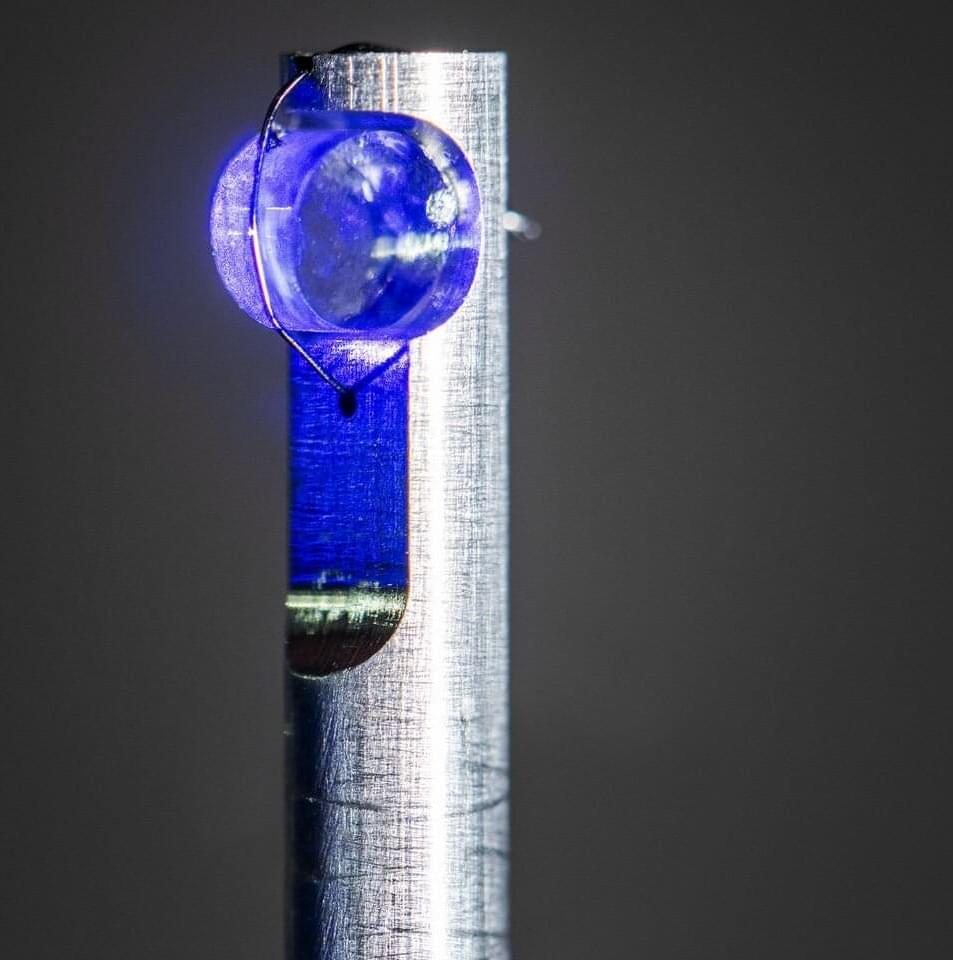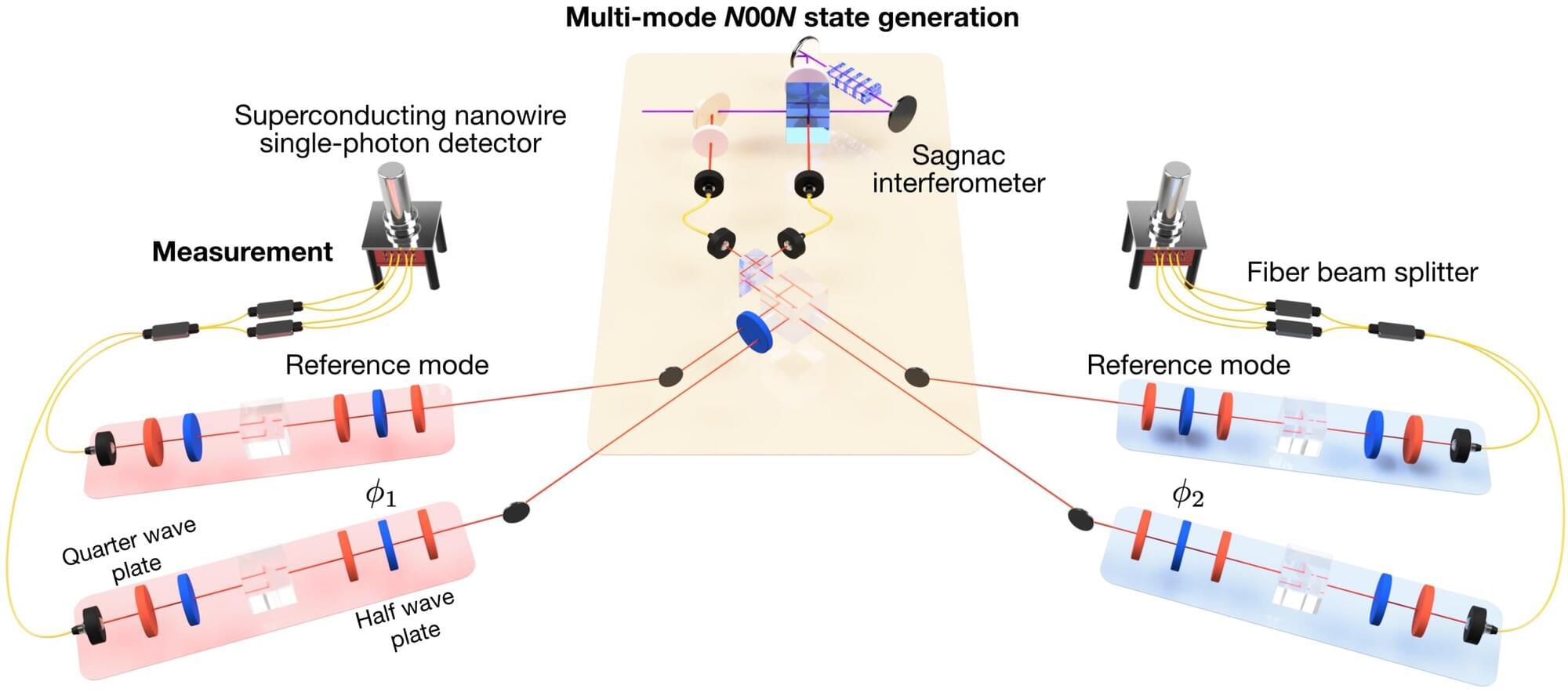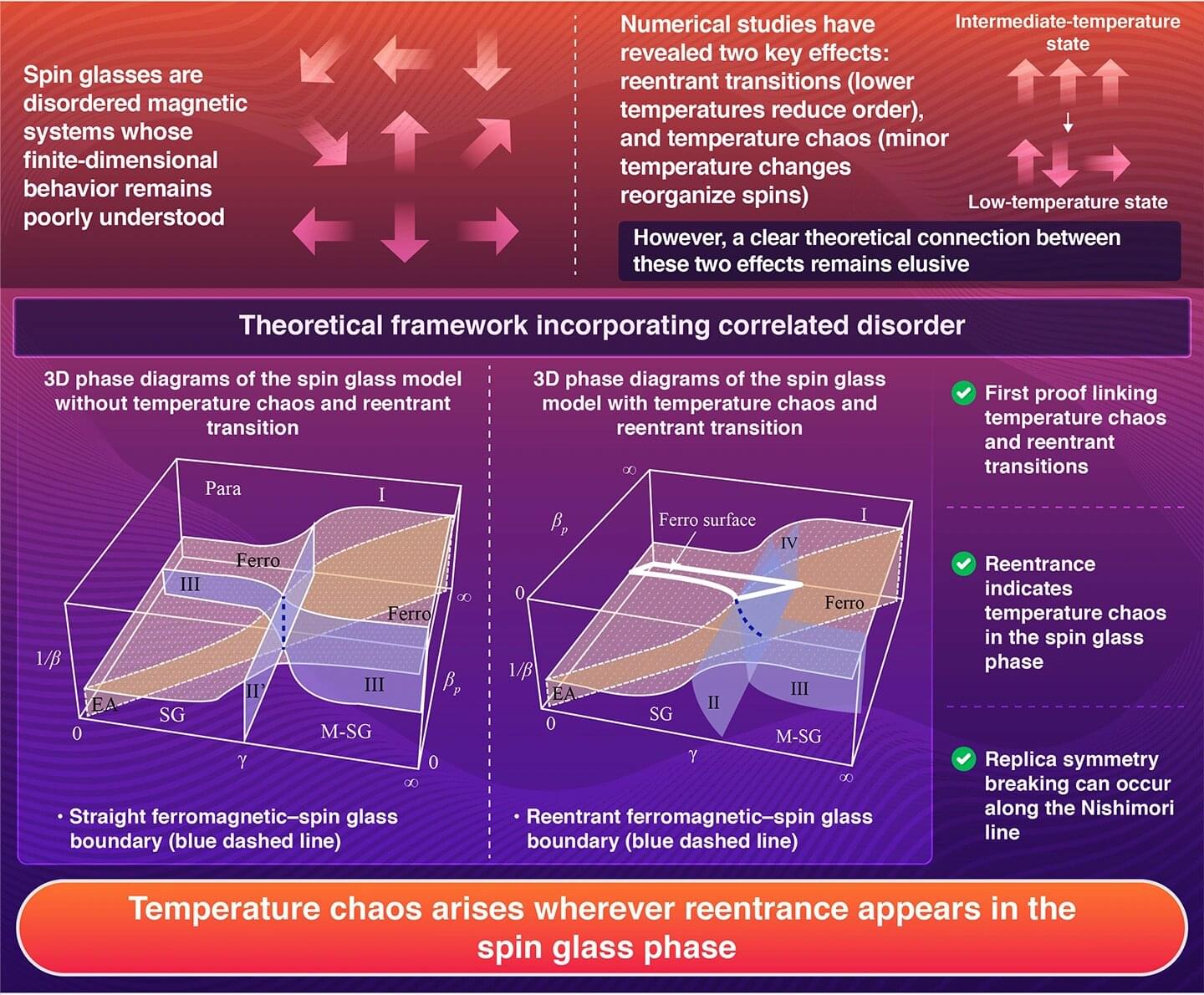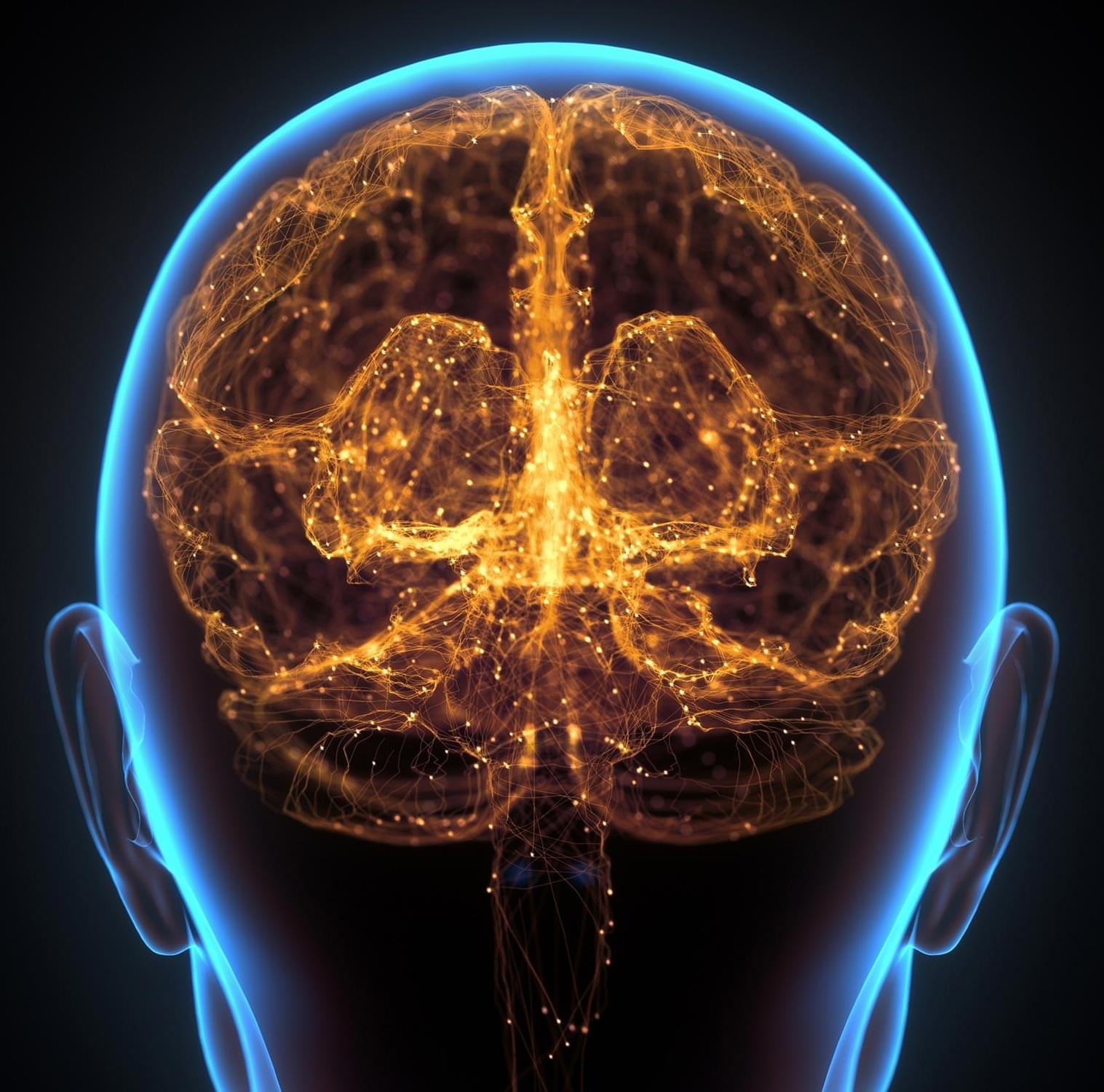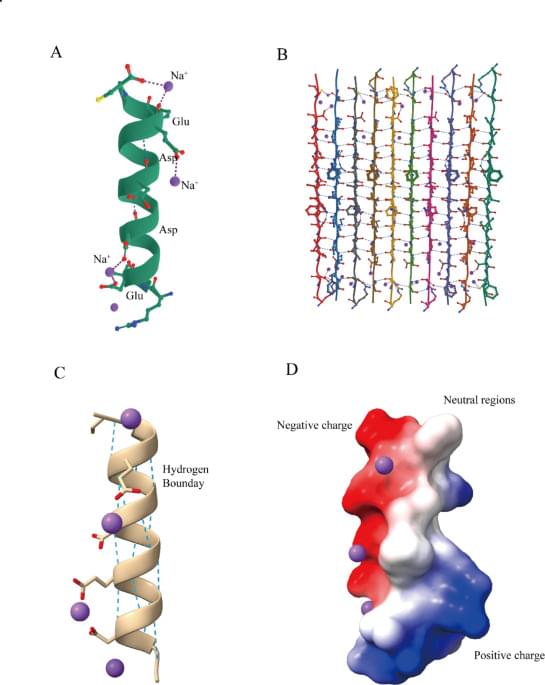When a slab slides beneath an overriding plate in a subduction zone, the slab takes on a property called anisotropy, meaning its strength is not the same in all directions. Anisotropy is what causes a wooden board to break more easily along the grain than in other directions. In rock, the alignment of minerals such as clay, serpentine, and olivine can lead to anisotropy. Pockets of water in rock can also cause and enhance anisotropy, as repeated dehydration and rehydration commonly occur at depth in a subducting slab.
It is well known that an earthquake generates both a compressional wave and a shear wave. If the shear wave passes through anisotropic rock, it can split into a faster shear wave and a slower one with different polarizations.
Although seismologists routinely measure the shear wave splitting in subduction zones by analyzing recorded seismic waveform data, it is challenging to pinpoint where splitting occurs along the wave propagation path.
